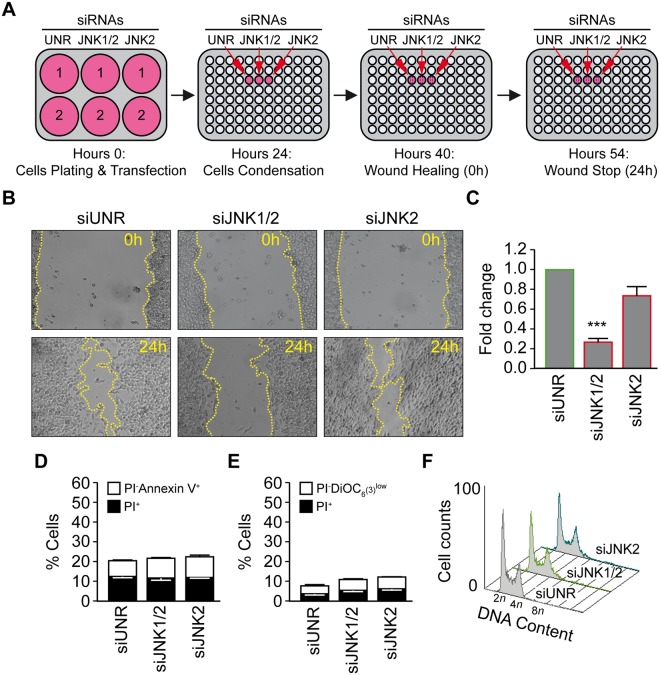Figure 6.
Inhibition of JNK1 and not JNK2 reduces the migratory potential of the human colon carcinoma RKO cells. (A–C) Cells were seeded into 6-well plate and were transfected with an unrelated small interfering (si) RNA (siUNR) or specific siRNAs directed against JNK1/2 or JNK2 (siJNK1/2 and siJNK2) (two well per condition). Upon 24 h, cells were harvested and seeded in a 96-well plate to ensure a monolayer confluence. After overnight culture a wound-healing test was performed and migration was evaluated after 24 h. Representative photomicrographs are shown in panel (B), the yellow broken lines delimit the cell-free area. Quantitative data of anti-migration % comparatively to control are presented in panel (C). (D-E) The toxicity of siRNAs JNK1/2 or JNK2 was evaluated by flow cytometry upon staining with the cell death–associated parameter dyes. RKO cells were transfected with siUNR, siJNK1/2 or siJNK2 for 48 h and then co-stained with the vital dye propidium iodide (PI) and the FITC-conjugated Annexin V for the detection of phosphatidylserine exposure (D) or co-stained with the vital dye propidium iodide (PI) and the mitochondrial membrane potential (Δψm)-sensing dye DiOC6(3) (F). Cells were transfected with siUNR, siJNK1/2 or siJNK2 for 48 h and then fixed with ethanol and labeled with the DNA dye PI, for the quantification of cell cycle. Representative histograms are shown. Data are reported in SEM; n = 3. ***(p < 0.001) indicates significant difference from the siUNR transfection (ANOVA).

